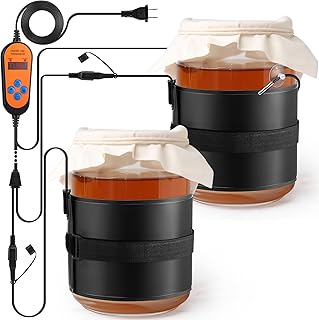What is Brettanomyces in the Vineyard?
Brettanomyces, often referred to as “Brett,” is a genus of yeast that can significantly impact the flavor profile of wines produced in vineyards. This yeast is known for its ability to thrive in various environments, including the vineyard itself, where it can affect grapes before they are harvested. Understanding Brettanomyces is crucial for winemakers and vineyard managers, as its presence can lead to both desirable and undesirable characteristics in wine.
The Role of Brettanomyces in Fermentation
In the fermentation process, Brettanomyces can contribute to the complexity of wine flavors. It produces various compounds, including phenols, which can impart unique aromas and tastes, often described as earthy, spicy, or even barnyard-like. While some winemakers embrace these characteristics, others may view them as flaws, depending on the style of wine being produced. The balance of Brettanomyces in fermentation is a delicate one, requiring careful monitoring.
Environmental Conditions Favoring Brettanomyces
Brettanomyces thrives in warm, humid conditions, making certain vineyard environments particularly susceptible to its growth. Factors such as poor sanitation practices, high levels of residual sugar in grapes, and the presence of certain nutrients can encourage Brettanomyces proliferation. Vineyard managers must be vigilant in maintaining optimal conditions to minimize the risk of Brett contamination, especially during the harvest and processing stages.
Identifying Brettanomyces in the Vineyard
Identifying Brettanomyces in the vineyard can be challenging, as its effects may not be immediately apparent. Winemakers often rely on sensory analysis to detect its presence, looking for specific aromas and flavors that indicate Brett influence. Additionally, laboratory testing can be employed to quantify Brettanomyces levels in grapes and wine, providing a more objective measure of its impact on the final product.
Impact of Brettanomyces on Wine Quality
The impact of Brettanomyces on wine quality is a subject of much debate within the wine community. Some connoisseurs appreciate the complexity that Brett can add to certain wine styles, particularly in red wines and some whites. However, excessive Brett can lead to off-flavors that detract from the wine’s overall quality. Understanding the threshold levels of Brettanomyces is essential for winemakers aiming to achieve a desired flavor profile.
Get more content like this!
Sign up to receive updates and new terms first hand.
Management Strategies for Brettanomyces
Effective management strategies for Brettanomyces in the vineyard include implementing strict sanitation protocols, monitoring fermentation conditions, and utilizing specific yeast strains that can outcompete Brett. Additionally, regular testing of grapes and wine can help identify potential issues before they escalate. By taking proactive measures, vineyard managers can mitigate the risks associated with Brettanomyces and maintain the integrity of their wines.
The Relationship Between Brettanomyces and Terroir
The relationship between Brettanomyces and terroir is an intriguing aspect of viticulture. Different vineyard sites may harbor unique strains of Brettanomyces, influenced by local environmental factors and winemaking practices. This can lead to distinct flavor profiles that reflect the vineyard’s terroir. Understanding this relationship allows winemakers to harness the potential of Brettanomyces while preserving the character of their wines.
Consumer Perception of Brettanomyces
Consumer perception of Brettanomyces varies widely, with some wine drinkers appreciating the complexity it brings, while others may find its characteristics off-putting. Education plays a vital role in shaping consumer attitudes towards Brett-influenced wines. By providing information about the potential benefits and drawbacks of Brettanomyces, winemakers can help consumers develop a more nuanced understanding of this yeast and its impact on wine.
Future Research on Brettanomyces in Viticulture
Future research on Brettanomyces in viticulture is essential for advancing our understanding of its role in wine production. Studies focusing on the genetic diversity of Brettanomyces strains, their interactions with other microorganisms, and their influence on wine aging will provide valuable insights for winemakers. As the industry continues to evolve, ongoing research will help refine management practices and enhance the quality of wines produced in Brett-prone regions.



